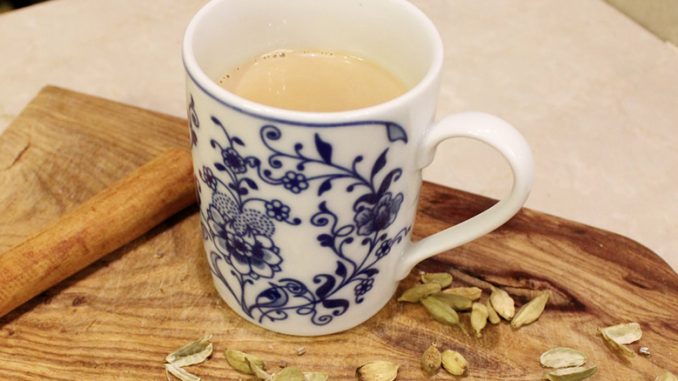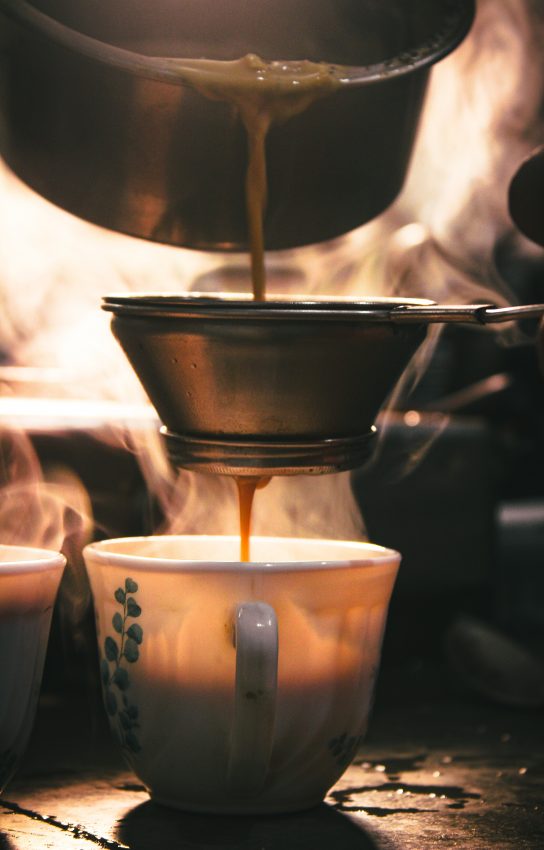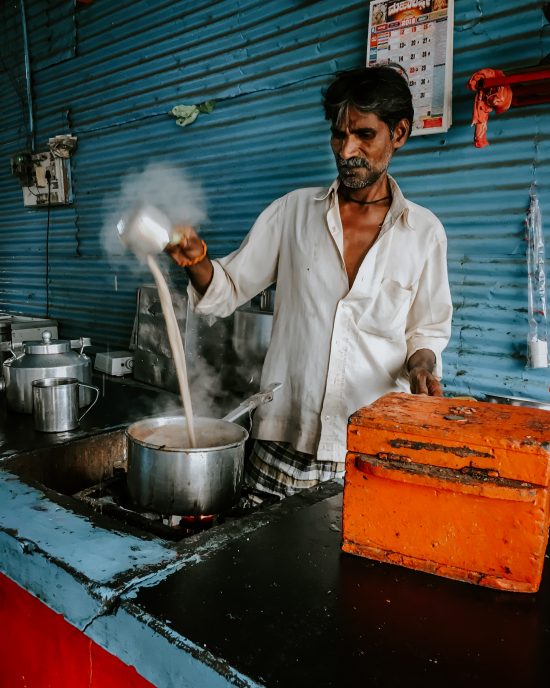
With ancient Vedic origins and a rich array of spices, chai is more than a drink—to the people of India, it’s a way of life.
BY EMILY MENESES
SPECIAL TO BARISTA MAGAZINE ONLINE
Cover photo courtesy of Soo Chung for Unsplash
Sweet, milky, spicy—what’s not to love about chai? In the Western world, most consumers think of chai as an exciting treat, a fun alternative to plain ol’ coffee or tea—but for the people of India, chai is a way of life. In Hindi, the word chai literally translates to “tea.” And the recipe, which consists of tea, milk, sweetener, and a wide array of spices, is India’s standard way of preparing tea. In this edition of “Know Your Ingredients,” we’re exploring the historical origins of chai and the deeper meaning behind the beverage.

Origins of Chai
Some trace the genesis of masala chai (spiced chai) as far back as 9,000 years to an ancient royal court, where a king crafted it as a cleansing concoction. At the time, the drink did not yet incorporate tea leaves—but that changed once black tea arrived in India, as a result of British colonization. In 1835, the British set up tea farms in Assam, Darjeeling, and other regions of India, and from there, locals began preparing the masala chai that we know today.
Chai in Ayurveda
Chai plays an important role in Ayurveda, a holistic healing system that originated in India more than 5,000 years ago. Ayurveda means “the science of life,” and its principles were documented in ancient Hindu scriptures (the Vedas), advocating for overall wellness through the balancing of one’s doshas: pitta, vata, and kapha—the three forms of energy that make up one’s life force. Different herbs and foods are attributed to different doshas, and an Ayurvedic diet consists of consciously consuming foods to balance one’s energy.
In Ayurveda, chai is considered a rasayana: an herbal concoction that strengthens the body—and each and every ingredient within it has a healing intention. Cinnamon is believed to warm the body, while cardamom increases mental clarity and focus; ginger settles the stomach, and clove stimulates digestion. Each spice resonates with a different dosha, bringing the body into complete balance.
Although there is a standard recipe for chai, subtle variations of the drink can be used to balance different doshas depending on what the person needs. For example, a person with an overabundance of vata (the dosha associated with the air element and characteristics of enthusiasm, lightness, restlessness, and creativity) might benefit from drinking chai with less black tea and more milk to minimize caffeine intake.

The Components of Authentic Chai
Authentic chai consists of three components: tea, milk, and spices. Assam, with its strong and full-bodied flavor, is the most popular choice of tea, and while any milk can be used, whole milk is believed to best bring out the flavor. Chai can be made with a wide variety of spice combinations, but the most commonly used ingredients are cardamom, ginger, star anise, clove, and cinnamon—sometimes with a dash of black pepper, coriander, nutmeg, and/or fennel. To sweeten the drink, sugar is also added, and in India, street vendors will often aerate the tea by pouring it back and forth rapidly between pots, giving the beverage a beautiful frothiness.
If all this chai talk has you craving the beverage, check out Sukhi Singh’s recipe to learn how to make authentic chai at home. Aromatic, flavorful, and rich in ancient history, it’s no wonder why chai has become a café staple all around the world.

ABOUT THE AUTHOR
Based in Los Angeles, Emily Meneses (she/her) is a writer and musician passionate about culture and collective care. You can regularly find her at Echo Park Lake, drinking a cortado and journaling about astrology, art, Animal Crossing, and her dreams. Explore her poetry, short stories, and soundscapes on her website.

